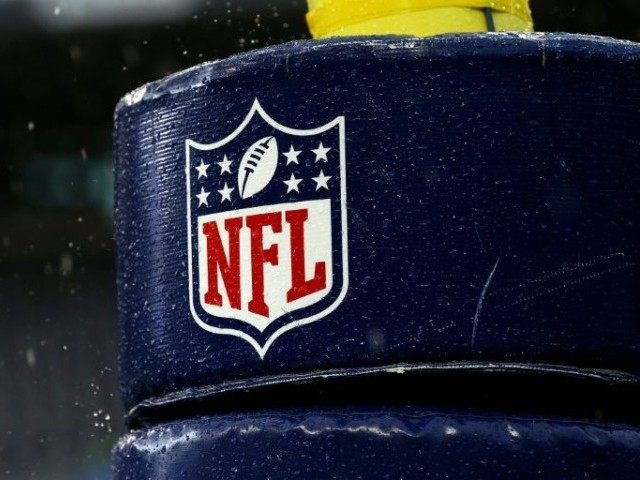Not since 1985 has San Antonio enjoyed a professional football team within its immediate media market. If the Oakland Raiders have their way, the Alamo City could be competing with Las Vegas for Texas’ third franchise, at the expense of local taxpayers according to a Breitbart Texas interview with Stanford University economics professor Roger Noll.
The central Texas corridor between San Antonio and Austin has been no stranger to professional sports franchises’ flirtation over the years, yet the latest look from the Oakland Raiders presents one of the strongest possibilities of a relocation to date. Breitbart Texas spoke with Professor Noll, an expert on the economics of sports stadiums and the publicly-funded bidding efforts to attract them.
When NFL Franchises Shop, You Pay
Both central Texas and Las Vegas are capable of absorbing and supporting an NFL team on their own, but Noll argues that Texas is still the better fit.
“I think San Antonio is probably better because Vegas is too dependent on tourism compared to San Antonio/Austin. [Central Texas] together has a bigger population,” Noll said.
The greater concern, however, is which municipality will demonstrate a willingness to assume a nine-figure debt to help pay down construction costs for a new stadium. Las Vegas officials are currently considering a financial package ranging between $550 to $750 million in public contributions toward a $1.45 billion domed facility proposed by casino magnate Sheldon Adelson and others. Noll holds reservations, however as to whether Sin City officials can unify around a proposal near the $700 million range: “I think that’s less than certain that they’ll get $750m.”
The Alamo Dome Won’t Cut It
Though often referenced as a ready-made solution for any NFL team looking for a new home, the Alamo Dome would only serve in an interim capacity, barring major upgrades to the aging facility, if even architecturally possible.
“[The Raiders] are going to want the same kinds of bells and whistles that lots of other teams have been able to get in the last few years … They’re going to want something that sort of looks like the 49ers’ facility,” Noll added.
Raiders ownership further buttresses this prediction after the San Marcos Mercury reported in January that a parcel of land was purchased in Hays County along the I-35 corridor nearly equidistant between San Antonio and Austin. Noll predicted that mid-cities stadium development “would be a virtually guaranteed success.”
San Antonio Has Been Ripe for an NFL Team for 30 Years
Can Texas handle a third professional football team? The Stanford economist argues that “San Antonio’s biggest ‘plus’ is that it’s in Texas” in terms of market support. The “San Antonio Raiders” would not necessarily owe their economic viability to the oft-cited Texas Miracle, however. Noll adds that he began studying which American cities without an NFL presence in the early 1980s could handle the responsibility. For roughly three decades, the central Texas corridor has resided in his top five locations.
“There are lots of cities in the 2-3 million population size range. If you distinguish among those, the first thing you look at is if there are high-income people willing to shell out a lot of money for a luxury box and things like that,” Noll notes. The second thing required is local football popularity.
Other cities qualified but lacking the NFL are Portland, OR and Memphis. Noll added that the Memphis Showboats of the long-defunct USFL were among one of the most economically successful markets for the old league.
But Even If We Build It, the Economic Growth Still Won’t Come
Noll warns taxpayers against the argument that stadiums built with the support of public bonds will eventually net local economic gains in his scholarship. Even if central Texas is ripe for a team, it holds no chance of reversing the trend, however. Season ticket and premium box holders generally reside within a short driving distance of stadiums and cannot be depended upon to support neighboring restaurants and hotels. No matter the master plan for the stadium, Noll argues that “it’s not true that a city is going to recapture the cost that it incurs by some overall increase in the local economy.”
Even so, San Antonio should not give up on the chance to attract an NFL franchise, Noll concluded.
“The issue of ‘would the team be viable?’ is different from the issue of ‘would the city reap some sort of financial windfall?’ Cities don’t reap financial windfalls – but that doesn’t mean that they shouldn’t try to get a team.”
Further north along I-35, the City of Arlington continues with “Project Six Shooter” – a $500 million public investment in a new retractable roof stadium for the Texas Rangers should voters approve, according to The Dallas Morning News.
Logan Churchwell is a founding member of the Breitbart Texas team. You can follow him on Twitter @LCChurchwell.

COMMENTS
Please let us know if you're having issues with commenting.